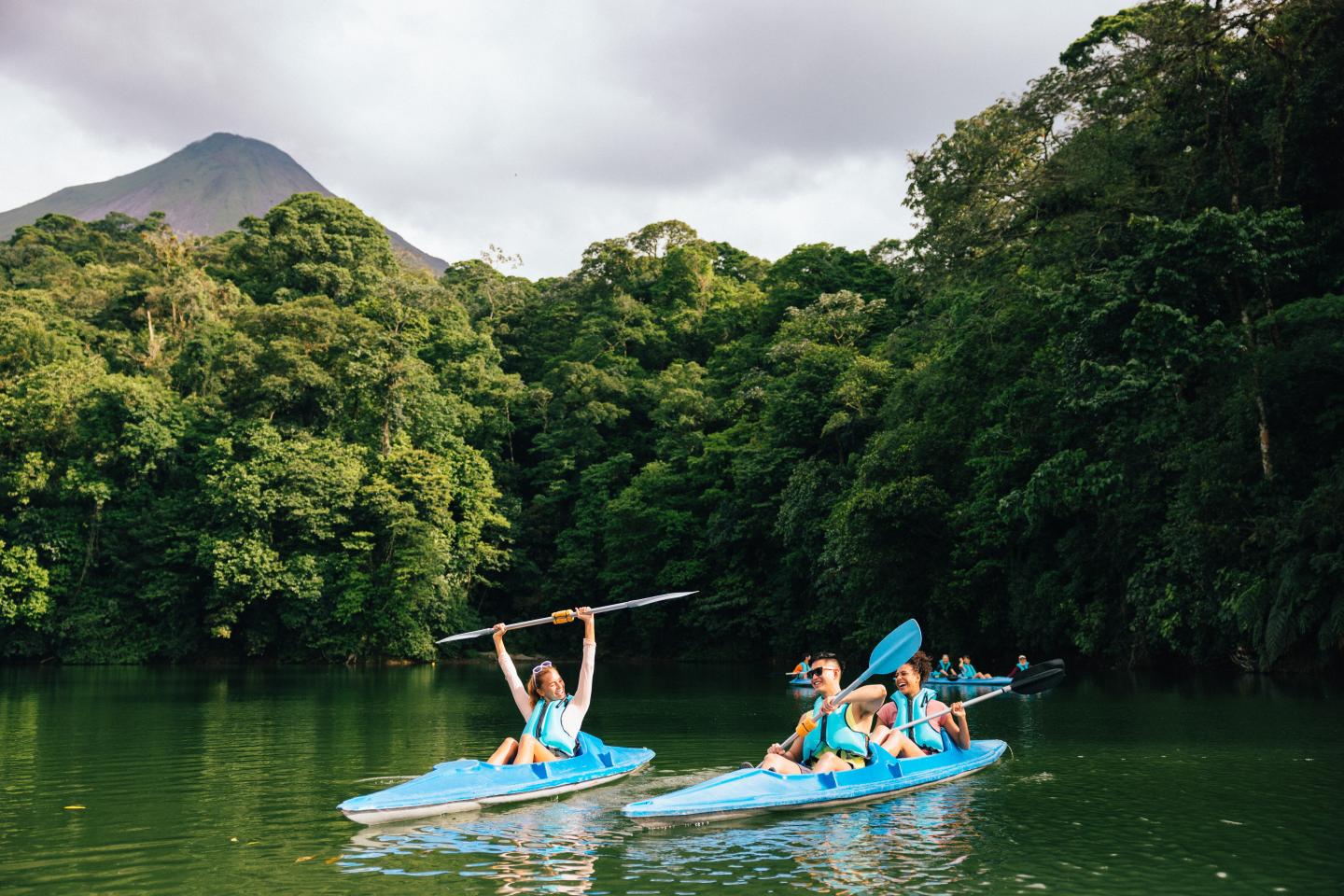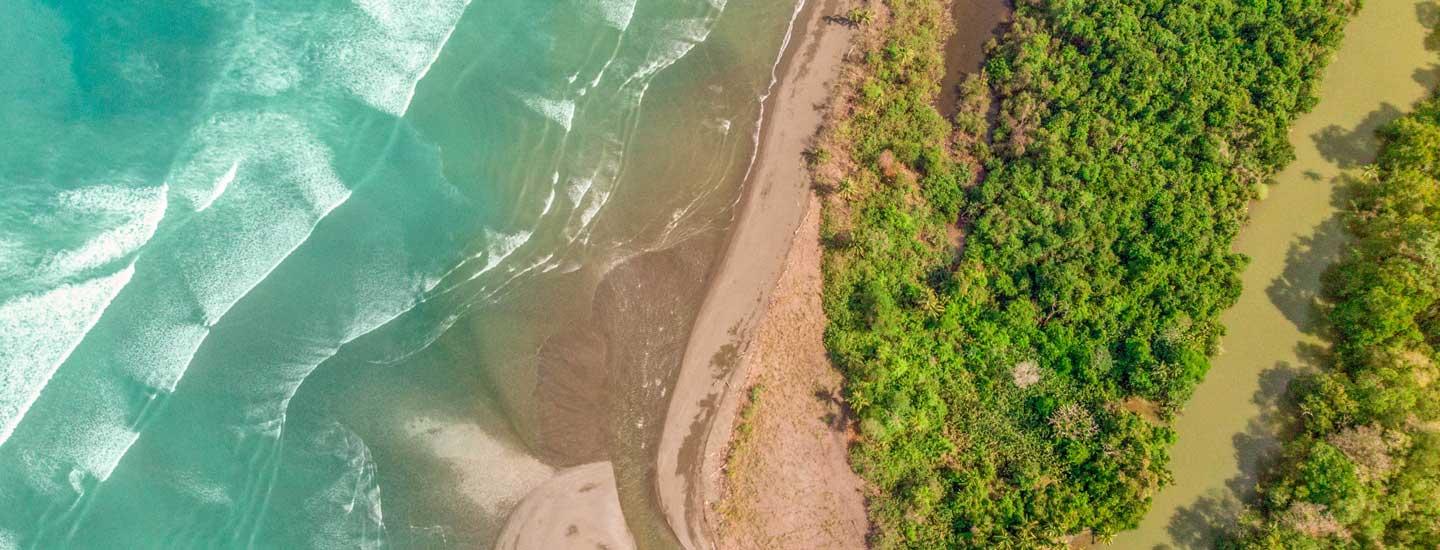about the region
The entrance door and distribution main center is Pérez Zeledón’s city, its limit extends through the canton’s edge, including the Fila Tinamastes attractions, such as the Cataratas of Nauyaca (waterfalls), Platanillo town and even the Barú River, where the coastal sector, that extends to Punta Burica with a total of 490 km, initiates.
The main activities include beach enjoyment and marine resources, such as whales and dolphin’s observation, as well as mangrove swamp’s, landscapes, reptilian, sport fishing, surfing, hiking through the National Park’s paths, professional diving, the energetic walks to the Chirripo’s summit, botanical gardens, protected areas’ impressive waterfalls… they are all part of the main product offered by the touristic unit that can be reached through this information bureau. Ecotourism features as the main product, especially the one that is carried out among the Humedal Sierpe-Térraba; the Golfo Dulce Forest Reserve, the Ballena Marine National Park, the Isla del Caño Biological Preserve and the Corcovado National Park.
The beach’s tourism possesses a wide potential in the coastal sector of Dominical-Piñuela; Platanares Beach; Zancudo and Pavones. The mountain’s product identifies itself in the Cordillera de Talamanca’s Mountain subunit, where San Gerardo de Rivas and San Vito of Coto Brus stand out as access centers to Chirripó National Park and the Friendship World Patrimony site.
Additionally, there is a high potential in the rural tourism development, in country settlements distributed along the region. Two important protected areas are located in this zone, one is the Corcovado National Park, which National Geographic Magazine defines as “the planet’s biologically richest place” and the Humanity Biosphere Preserve, declared as Humanity Patrimony and part of the Amistad International Park.
The main product is ecotourism, especially in:
- Sierpe-Térraba Wetlands
- Golfo Dulce Forest Reserve
- Marino Ballena National Park
- Isla del Caño Biological Reserve
- Corcovado National Park
Beach tourism has a large potential in the coastal area of:
- Dominical-Piñuela
- Platanares Beach
- Zancudo and Pavones
The product of mountainous areas is identified by the subunit of the Talamanca mountain range, where San Gerardo de Rivas and San Vito de Coto Brus provide access to the Chirripó National Park and La Amistad World Heritage Site.
did you know...
Sport fishing can be enjoyed without hassle due to the richness of the Golfo Dulce and several sites or communities that provide services in a sustainable and responsible manner, including: Puerto Jiménez, Golfito and Zancudo.
197 inches of rain annually on average, one of the wettest areas in Costa Rica
85 species of protected marine wildlife including dolphins and whales
25 percent of the region is protected land including 103,277 acres in Corcovado National Park
exploring the South Pacific zone
planning your trip to the South Pacific
Costa Rica is a small country that is immense in its biodiversity, culture, and gastronomy. It is a destination that can be enjoyed at any time of the year. To experience the country from one end to the other and visit unique sites that you’ll carry in your heart forever, professional companies are available and trained to provide you with the best experience and the best service. These professionals will show the true “pura vida.”
The extraordinary biodiversity on offer in every corner of this exuberant country ensures that all visitors will enjoy a unique experience. With a highly diverse landscape comprised of 12 different climatic zones, travelers in Costa Rica enjoy an incredible variety of environments that change from one moment to the next.
All these characteristics make Costa Rica a perfect destination to enjoy at any time of the year. As a premier all-year-round destination, the country offers a wide variety of hotels for all budgets, travel agencies, car rental agencies, and a wealth of activities from qualified tourism companies.
The companies in this directory have recognitions such as the CST (Certificate of Tourism Sustainability), which is a program that categorizes tourism companies based on the actions they take to support sustainability and effectively manage natural, social, and cultural resources.
The Tourism Declaration is another award the ICT (Costa Rican Tourism Board) grants to companies that meet the technical, economic, and legal requirements indicated in the respective regulations. Meeting the demanding requirements of the Tourism Declaration is a sign of the companies’ commitment to excellence in the tourism products they provide.
Costa Rica is the perfect country to relax, explore, and experience true adventure.
Welcome to a country you’ll want to keep coming back to!

South Pacific's top 10
Caño Island is undoubtedly one of the most beautiful islands of Costa Rica, it is located approximately 20 kilometers west of the Osa Peninsula, just northeast of the Corcovado National Park. In addition to its white sand beaches and five platforms of live coral reefs, Caño Island is one of the most important Pre-Columbian archaeological sites in the country. It was used for its prehistoric inhabitants as a cemetery and sacred place, plus some of the areas largest stone were found on this island.
The stone spheres are a symbol of Costa Rican identity. More than 300 stone spheres of various sizes from a few centimeters to 2.5 meters in diameter have been found. The stone spheres were found mainly in the banana plantations in Palmar Sur, mainly in the Finca 6 and Cano Island. Finally, in 2014 the first Museum of Stone Spheres was created, where they can be observed in their original location and their history.
The Dominical Beach is one of the most interesting beaches for surfing, as it has strong waves. On the other hand, Dominicalito Beach offers much calmer waves and light brown sand and a forest along the shore, it is a place of great beauty for tourists. In the southend lies Dominical Point, which features viewpoints from a rocky hill covered with vegetation, and the islet Rock Tree, which offers a beautiful landscape of the mountainous coast.
The South Pacific is home to several indigenous groups among which are the Cabécares, the Guaymies and Borucas. In the area, several beautiful and different Indian reservations can be found as a tourist attraction. The village of Boruca, anchored in the forest area, is a charming place where you can still see the way of life of this indigenous group. The Boruca Indigenous Community Museum features typical architecture and traditional Indian dwellings, plus the exposure of artistic work of the area, such as masks, water bowls and sticks, among other preservations. A few kilometers from the town center, you get to a sacred place for Borucas where you can see a complex of waterfalls that are considered among the most beautiful in the country. In December, the Feast of the Little Devils is celebrated, a Boruca tradition that represents death struggle against the Spanish culture invading indigenous territories.
Located north of the Osa Peninsula, is the Corcovado National Park and the Drake Bay. It boasts with unique natural and archaeological wealth of the country. Corcovado is considered the place with the highest concentration of flora and fauna of the country, making it a mega biodiverse area, which is also known as the open zoo of Costa Rica. Until recently, Drake Bay, specifically the people of Agujitas, could only be visited by sea. Its beaches are rocky and contain a scenic beauty. In addition to the wildlife that inhabits these lands, the area is also known for the nearby attractions such as Caño Island, the Térraba-Tiller and the Archaeological Museum of Stone Spheres, among others
San Vito is the head of the canton of Coto Brus, established by an agreement between the Italian Society of Agricultural Colonization (SICA for its acronym in Spanish) and the Government of Costa Rica to develop the area. This was how an Italian colony was founded in the southern part of the country. San Vito is known for its friendly atmosphere, good coffee grown on the slopes of Agua Buena, and its Italian cuisine. San Vito offers several attractions for discovering, such as the Wilson Botanical Garden, archaeological sites, caves, hot springs, and waterfalls, among others.
The Nauyaca Waterfalls are located 12 kilometers from Dominical on the road to Perez Zeledon, on a private estate. The unusual beauty of these waterfalls makes them a place of choice for both foreign and local visitors. They are also known as the "Santo Cristo or Don Lulo" waterfalls. Besides admiring the beauty of the landscape and the lush vegetation of the area, there is a fresh water pool for swimming and enjoying a natural experience.
San Isidro del General is the largest city in the south of the country. In recent years it has developed a lot, especially in the area of services and tourism. It is also a place of access for several of the most important attractions of the area, as is for example the Chirripo National Park, which boasts the highest altitude in the country (3,821 meters above sea level), where in clear days you can see both the Pacific coast and the Caribbean coast. In San Gerardo de Rivas, located on the way to Chirripo National Park, one can also find special hot springs and numerous waterfalls, for visitors who prefer walking less intense than Chirripó.
The Terraba-Sierpe Mangroves represent the largest and most important wetland in the country as it is one of the ecosystems with highest sensitivity to environmental changes and a wealth of biodiversity. On the banks of the Sierpe River is a small town of the same name, located about 15 kilometers from Palmar Sur. For the beauty of its landscapes and as a means of fast access to sea, it is widely used by tourists who want to visit Drake Bay, Corcovado National Park and Caño Island, among others.
Ballena Beach and the Three Sisters Rocks are part of the Ballena Marine National Park, which stretches from Uvita Point to Piñuela Point. The Ballena Beach is named after its shape of a whale tail. It is an area surrounded by great beauty due to its coastal scenery, from where you can spot humpback whales (from August to October and December to April), and dolphins throughout different seasons. The beach has little surf and fine, light brown sand.



























